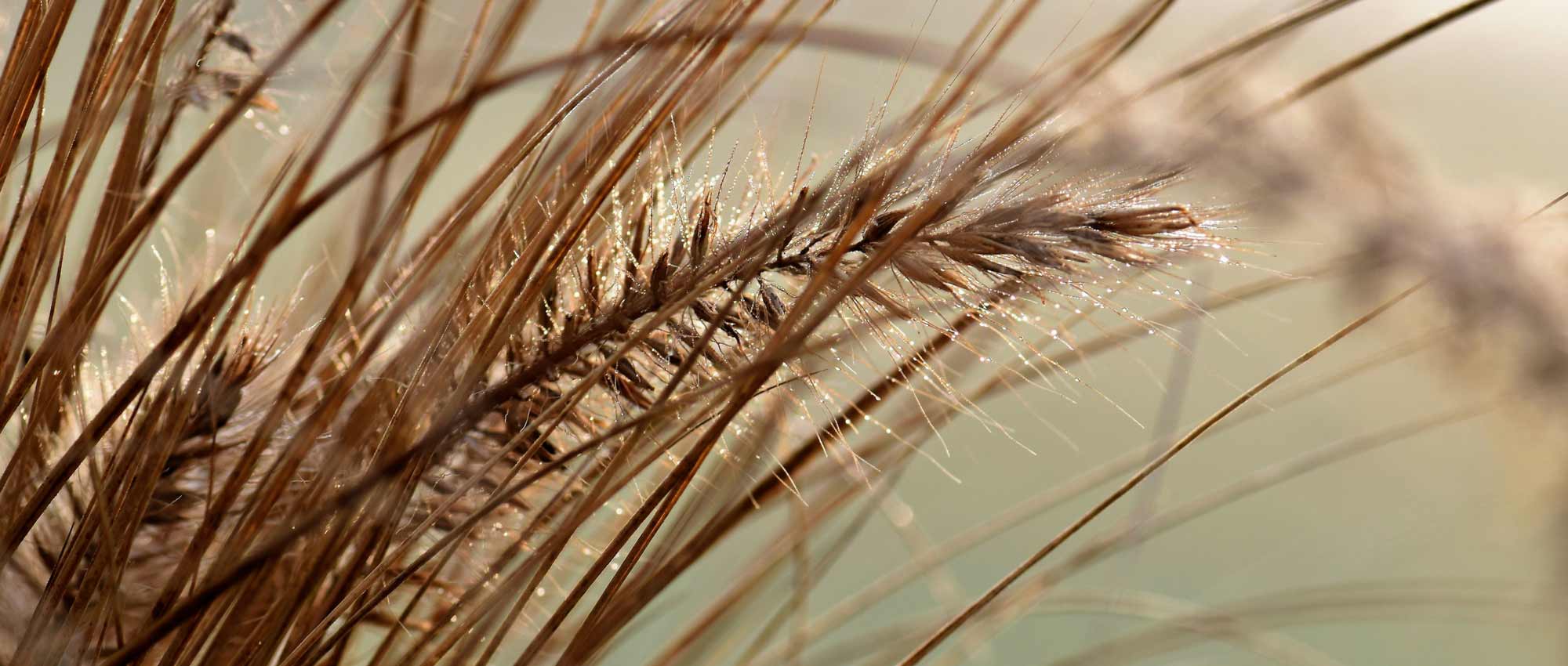
Grasses: which variety to choose?
our tips!
Contents
Ornamental grasses are perennial plants that form clumps and are distinguished by their fine, graphic foliage, sometimes evergreen. Easy to grow, most of them thrive in sunny locations and tolerate drought very well! They are robust plants, ideal for sustainable gardens, requiring little water and maintenance! They bring a lot of lightness and volume to flower beds, giving them a natural meadow feel. They have a very simple yet elegant appearance. They can enhance the back of flower beds by adding height, structuring them, and also serve as ground cover for the shorter species. When paired with airy and light-flowering plants, such as Gaura lindheimeri or Verbena bonariensis, they allow for the creation of a naturalistic flower bed with a rustic and wild look. Some, like Pennisetum, have very decorative spikes. Grasses encompass a wide variety of species, with different colours, sizes, and growing conditions… Discover our tips for making the right choice!
Which grass for which situation?
-
Grasses for Shade
Enjoy grasses to carpet the base of trees or to create a wild garden in the undergrowth. Pair them with ferns, hostas, lady’s mantle, or hellebores. Hakonechloa macra forms small tufts with bright, trailing foliage. You can also choose Luzula sylvatica, particularly the variety ‘Solar Flare’ for its lovely golden hue. Luzula nivea will charm you with its silky foliage and stunning white inflorescences. Ophiopogon planiscapus ‘Nigrescens’ is a small border plant, remarkable for its very dark colour, which creates contrasts and highlights lighter shades. As for Carex morrowii ‘Ice Dance’, it boasts beautiful evergreen foliage, green and white, which will brighten the darkest areas of the garden.
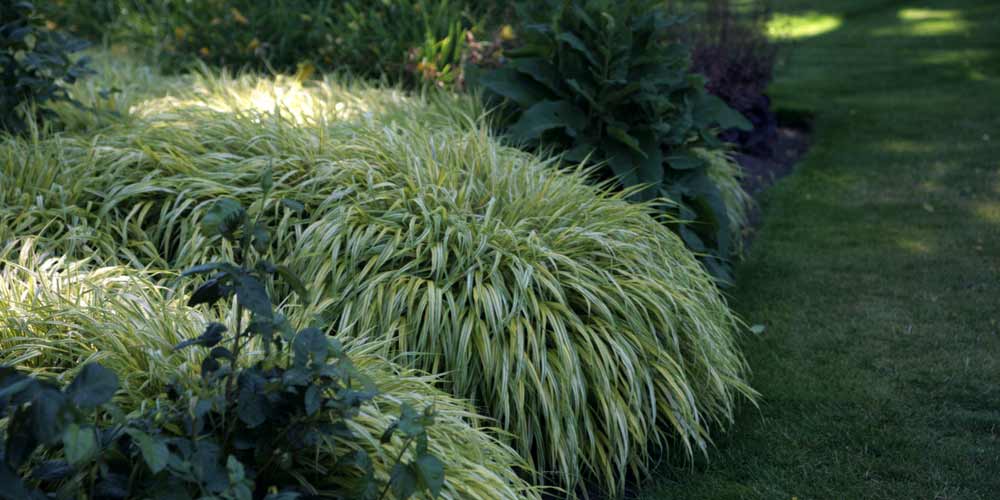
Hakonechloa macra ‘Aureola’ is an excellent shade grass! Discover it in Olivier’s video: Hakonechloa macra
-
Grasses for Wet Soil
While many grasses thrive in sunny situations and well-drained soils, others will flourish at the edge of a pond or in marshy ground. This is the case with Carex elata ‘Aurea’, with its magnificent golden yellow and very fine foliage. Grow Acorus gramineus ‘Variegata’, which forms small variegated tufts of white and yellow. Bulrushes are bank plants that will thrive at the pond’s edge: choose for example Juncus inflexus, or the original Juncus effusus ‘Spiralis’. For more height, grow Arundo donax, the Giant Reed. Also consider reeds: Phragmites australis. Some grasses even grow with their feet directly in water, like the marsh bulrush, Eleocharis palustris, appreciated for its fine and delicate appearance! Finally, if you wish to enjoy variegated foliage, you can choose Glyceria maxima ‘Variegata’. As you can see, the choice of grasses suitable for growing by the water is very wide… take advantage of it! Their exceptional graphics will add even more natural beauty to your pond.
→ Read also: Which grasses to choose for wet soil? and Top 10 grasses for heavy and clay soil, and Which grasses for acidic soil?
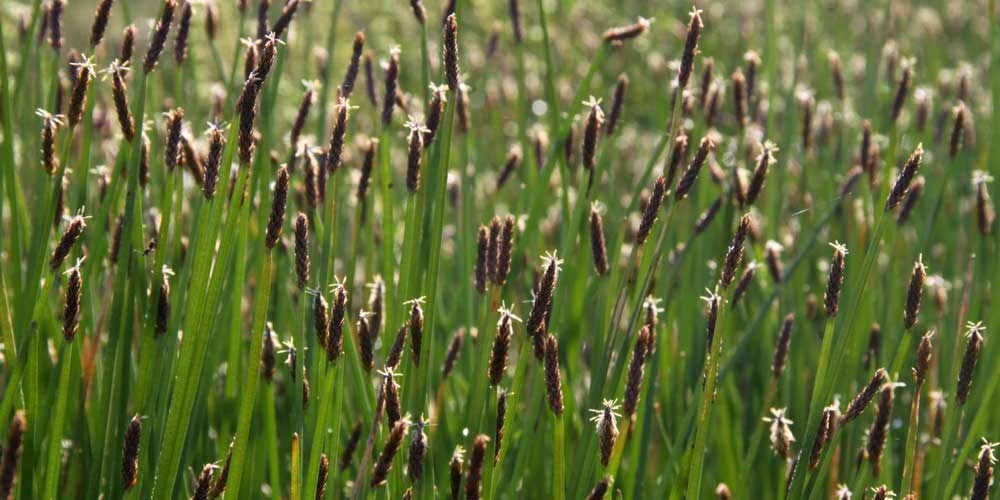
Eleocharis palustris (Photo: Yuvalr)
-
Grasses for Dry Soil
Stipa and fescues are delicate grasses suited to poor, dry soils. Choose the essential Stipa tenuifolia, or Angel Hair, with its very fine and silky foliage… Or be surprised by the stunning feathery spikes of Stipa pennata, a grass full of charm and poetry! To add colour to your borders, opt for the warm shades of Stipa arundinacea. You can also choose Festuca glauca, which forms beautiful blue tufts with fine foliage. And if you find these grasses too short, discover Stipa gigantea, whose large inflorescences can reach up to two metres in height, will surely add volume to your borders!
→ Read also: Which grasses to choose for sandy soil?, 9 grasses for dry soil, Which grasses in calcareous soil?
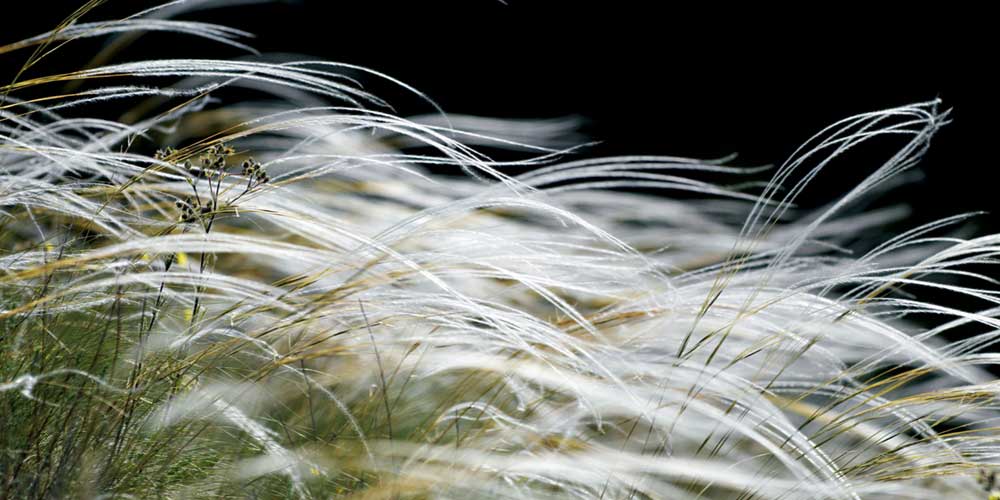
The feathery spikes of Stipa pennata
Which grass for which effect?
-
Evergreen grasses
Evergreen grasses provide a stunning display throughout the year. They require very little maintenance and do not need pruning! Deschampsia cespitosa is a remarkable grass with lovely upright panicles that start off green and turn golden. Also discover Uncinia rubra, a surprising grass that forms clumps of vibrant red! It enjoys cool or moist soils. In slightly drier conditions, enjoy the warm hues of New Zealand sedges (Carex buchananii and Carex comans). The stipa form small tufts, with very fine foliage that seems to dance in the wind! Choose Stipa tenuifolia or Stipa pennata. Also discover Helictotrichon sempervirens, the blue oat, which forms beautiful blue-grey clumps. For a more pronounced blue, we recommend Festuca ‘Elijah Blue’.
 From left to right: Uncinia rubra, Helictotrichon sempervirens and Carex comans
From left to right: Uncinia rubra, Helictotrichon sempervirens and Carex comans
-
Vibrant Coloured Grasses!
Brighten your borders with the golden foliage of Hakonechloa macra ‘All Gold’ or ‘Aureola’. For cool or moist soils, Acorus gramineus ‘Ogon’ also has very bright green and yellow foliage! For a flamboyant border, choose Imperata cylindrica ‘Red Baron’, impressive for its light green (almost yellow) and bright red bicoloured foliage! Grow it in cool or moist soil. Still in red hues, be surprised by the vibrant colours of Uncinia rubra! However, it is more sensitive to cold than other varieties. Also discover the flamboyant foliage of Hakonechloa macra ‘Nicolas’, in orange-yellow tones, even bronze. As for the sedges, they are small evergreen grasses that can take on various hues, sometimes coppery or variegated with yellow. Elymus magellanicus is remarkable for its beautiful, pronounced blue foliage. As for Panicum virgatum ‘Heiliger Hain’, it offers a stunning gradient of purplish-red tones in autumn.
 From left to right: Hakonechloa macra ‘Aureola’, Uncinia rubra and Panicum virgatum ‘Heiliger Hain’
From left to right: Hakonechloa macra ‘Aureola’, Uncinia rubra and Panicum virgatum ‘Heiliger Hain’
→ Also read: 5 Variegated Grasses, 7 Blue Grasses, 7 Red Foliaged Grasses
-
The tallest and most imposing grasses!
Whether used as a solitary feature in a garden or to enhance and structure a border, grasses can create an impressive visual effect, provided you choose the tallest ones. The Miscanthus are suitable for this purpose, particularly the various varieties of Miscanthus sinensis. And the very tall Miscanthus giganteus, aptly named, as it can reach up to three metres! The pampas grass, Cortaderia selloana, is impressive with its gigantic tufts from which large upright inflorescences emerge. For wetter soils, choose Arundo donax, the Giant Reed. It is also available in a variegated version with the variety ‘Versicolor’. Also discover Panicum virgatum Northwind, a majestic and robust plant that will make a beautiful impact at the back of a border.
→ Learn more with our sheets: Choosing a Panicum, Choosing a Miscanthus and XXL Grasses: Must-Have Varieties to Add Volume to Borders.
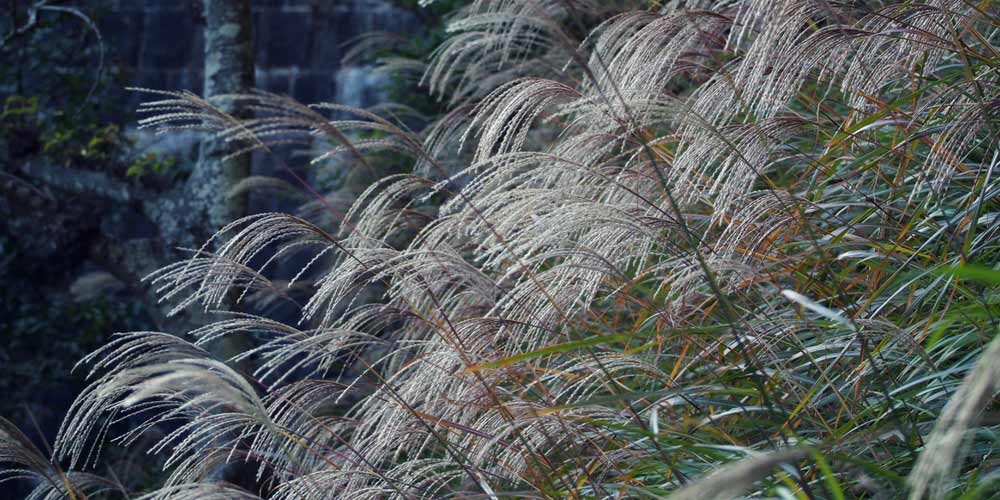 Miscanthus sinensis (Photo: harum.koh)
Miscanthus sinensis (Photo: harum.koh)
-
For decorative spikes
Beyond their fine and graphic foliage, grasses are also decorative for their spikes, often fine and light, even feathery. In this category, the pennisetums stand out for their lovely spikes, earning them the name Foxtail Grass. The most classic is Pennisetum alopecuroides. For finer and more flexible spikes, choose Pennisetum orientale. If you want more colour, be charmed by the purple tones of Pennisetum setaceum. As for Pennisetum villosum, it is distinguished by its remarkably silky spikes, which are very soft. Also discover the airy and vaporous spikes of Calamagrostis brachytricha, also known as Diamond Grass. Very original, Briza media has small spikes that move with the wind. Finally, the small rounded and very soft inflorescences of Lagurus ovatus are incredibly charming! They earn this plant the name Hare’s Tail. However, be careful, it is an annual!
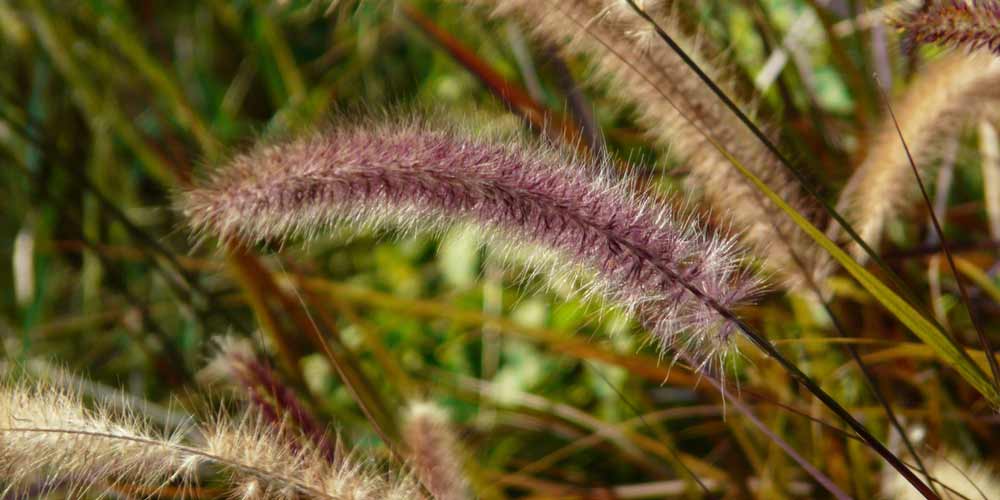 Pennisetum setaceum (Photo: Dinesh Valke)
Pennisetum setaceum (Photo: Dinesh Valke)
Discover other Ornamental grasses
View all →Available in 0 sizes
Available in 1 sizes
Available in 0 sizes
Available in 0 sizes
Available in 1 sizes
Available in 0 sizes
Available in 1 sizes
Available in 1 sizes
Available in 1 sizes
Available in 2 sizes
Choosing according to the use
-
In pots or containers
Pennisetum adapt very well to container cultivation! You can create stunning compositions by planting them alongside Verbena, Sanvitalia, Anthemis, or Bidens… Choose the Pennisetum setaceum for its beautiful purplish hues (the ‘Rubrum’ variety, for example, allows for splendid contrasts)… Or fall for the golden foliage of Pennisetum alopecuroides ‘Hameln gold’! Small in size, carex also thrive in pots. Pair them with hardy geraniums. You can thus grow Carex oshimensis, with its long leaves cascading over the edge of the pot! Also enjoy the bright colours of Hakonechloa macra, particularly the golden foliage of the ‘All Gold’ variety.
→ Read also: 6 grasses for pots.
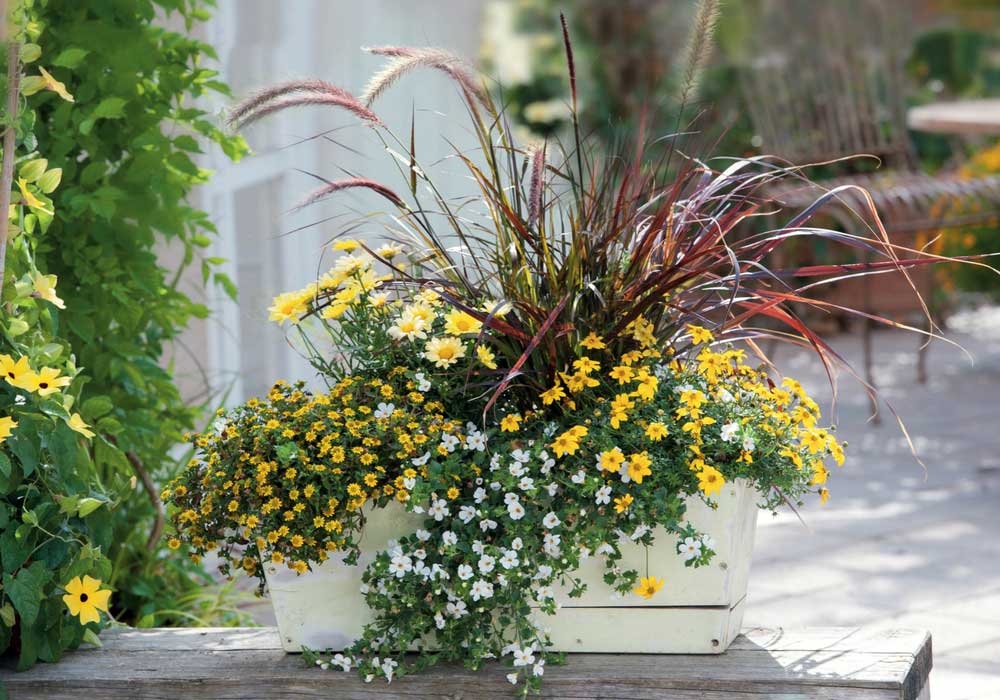
Pennisetum, Sanvitalia ‘Aztekengold’, Anthemis ‘Butterfly’; Bacopa and Bidens (Photo: Biosphoto / Friedrich Strauss )
-
As ground cover
Grasses are also the plants of lawns or sports fields, so it is easy to imagine them being used as ground cover. Sometimes very low, some have a good ability to cover large areas. Among them, luzules make excellent ground cover! Adapted to shade, they can thrive at the foot of trees. Create a remarkable golden yellow carpet with Luzula sylvatica ‘Solar Flare’, capable of illuminating the darkest areas of the garden. Carex morrowii is also a very good ground cover. Choose, for example, the ‘Ice Dance’ variety with green foliage edged in white. As for Sporobolus heterolepis, it forms beautiful rounded clumps with very fine, soft green foliage.

From left to right: Luzula sylvatica ‘Solar Flare’ (photo Guido), Carex morrowii ‘Ice Dance’ and Carex morrowii ‘Irish Green’
-
Low varieties: at the front of a flowerbed or as edging
To dress the front of a flowerbed or create an edge, choose the lowest grasses, those that form small rounded clumps. We particularly recommend fescues, especially Festuca glauca, with its blue-grey foliage. Less common, Festuca gautieri forms superb rounded cushions of beautiful soft green. With its many varieties of golden foliage, the grass Hakonechloa macra brings a lot of brightness. It allows for remarkable colour contrasts. Much darker, Ophiopogon planiscapus ‘Nigrescens’ is an excellent edging plant, perfect for highlighting the contours of a brighter flowerbed. Small in size, carex are also suitable for this use… Just like stipa (of course avoiding Stipa gigantea!), incomparable for the fineness of their foliage!
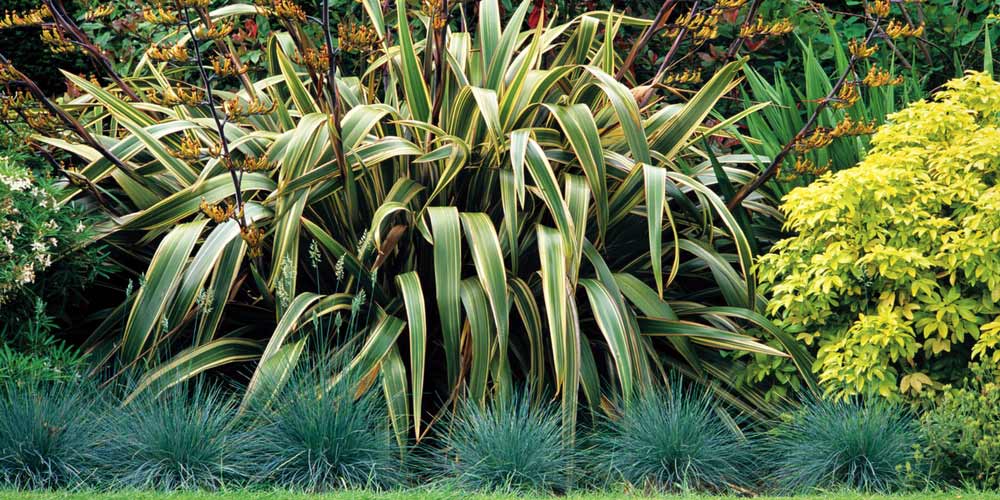
Festuca glauca ‘Elijah Blue’ planted as edging dresses the base of a beautiful specimen of Phormium tenax ‘Variegatum’ (Photo: GAP Photos / S & O)
-
To lighten a flowerbed
Grasses are a good solution for flowerbeds that are a bit too flat, low, or with coarse and wide foliage (for example, a flowerbed with heucheras or bergenias). Choose grasses with the finest foliage and feathery inflorescences. They also soften the brightest blooms.
With their exceptionally fine foliage, stipa are perfect for lightening flowerbeds. The wind seems to play with them, making their inflorescences and foliage undulate. They also have the advantage of being evergreen. You can choose the stunning Stipa pennata, with its silvery, silky spikes that dance with the wind and reflect the sun. Or the more classic Stipa tenuifolia, Angel’s hair, which will have a very beautiful effect in a wild garden. Taller, Stipa gigantea has an exceptional airy flowering, carried by long upright stems. Also discover Miscanthus sinensis ‘Gracilimus’, with very fine foliage and silky inflorescences. Finally, enjoy the elongated purple spikes of Pennisetum setaceum or the white, feathery spikes of Pennisetum villosum.
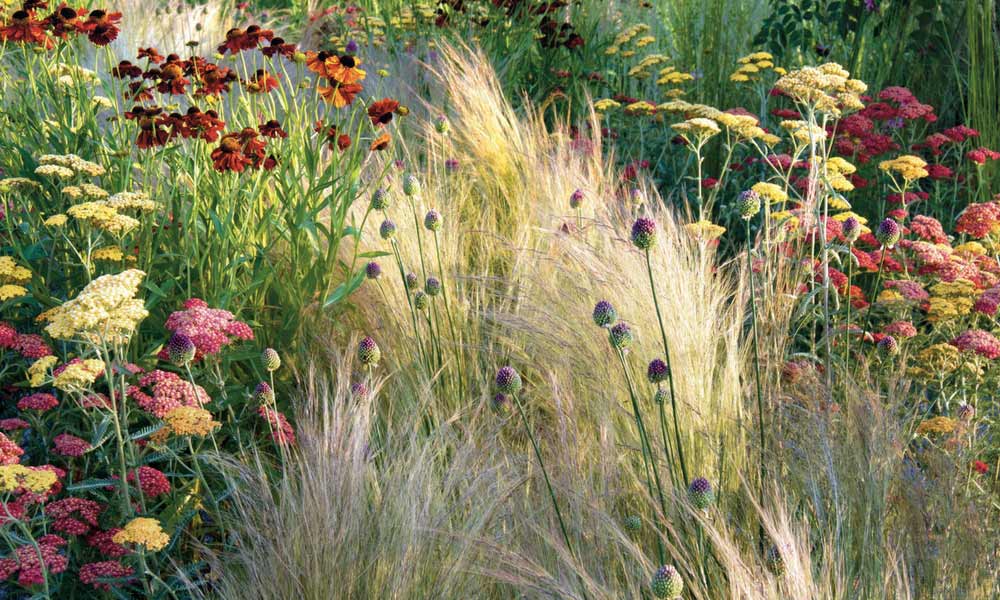
Stipa tenuifolia, Allium sphaerocephalon, Achillea Terracotta, Achillea Beacon, Achillea millefolium ‘Paprika’ and Helenium ‘Moerheim Beauty’ (Photo: GAP Photo – Rob Whitworth)
- Subscribe!
- Contents































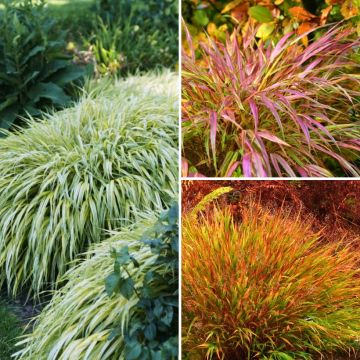
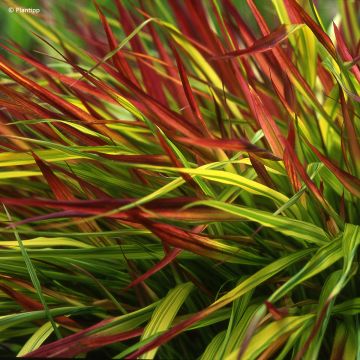

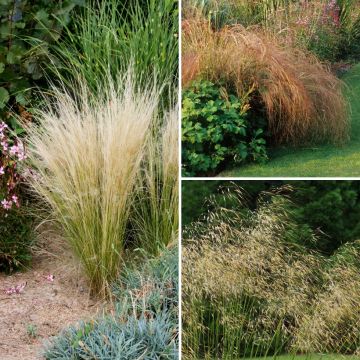

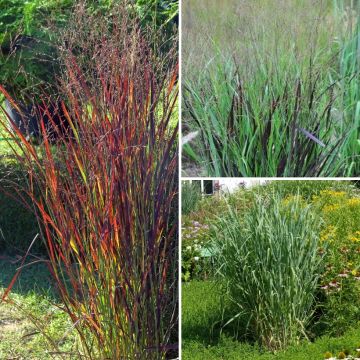
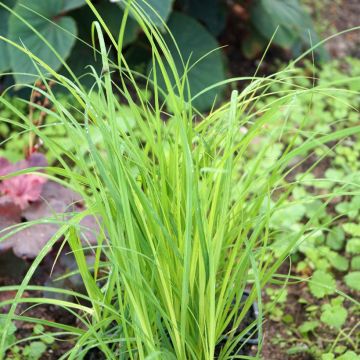
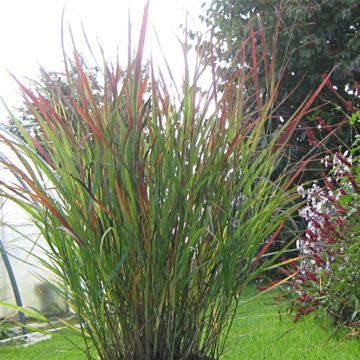
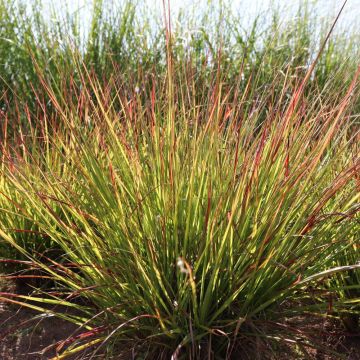
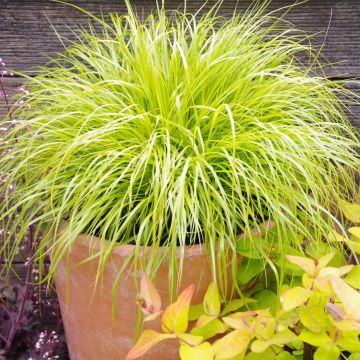
Comments